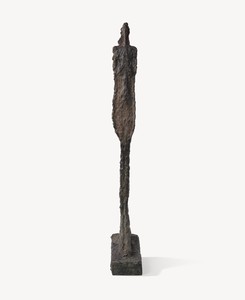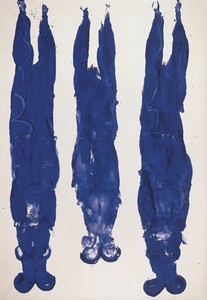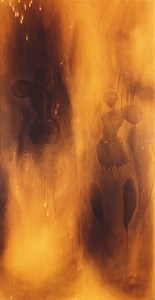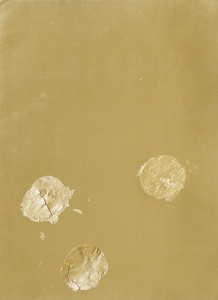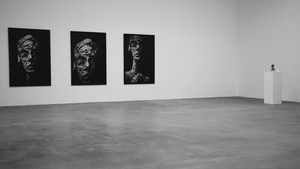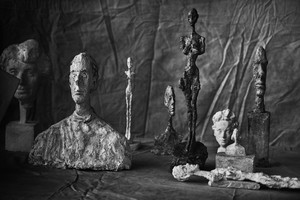Gagosian is pleased to present the first-ever exhibition to pair key works by Alberto Giacometti (1901–1966) and Yves Klein (1928–1962).
At first glance, Giacometti and Klein, born a generation apart, could not be more different: Giacometti was a master of material form and figurative representation, while Klein was an influential theorist whose art married the conceptual with the cosmic. In the 1950s and early 1960s, the two artists lived and worked within a mile of each other, in Montparnasse, Paris, but there are few clues in their work to suggest that they shared the same artistic milieu. What they did have in common was an acute consciousness of the catastrophic effects of the Second World War and its aftermath on European culture. Each dealt with it in his own way: in his sculptures, Giacometti struggled to evince a vital human presence from nothing; Klein shunned the personal, autobiographical mark, attempting to dematerialize painting to the point of pure saturated colour. As exhibition curator Joachim Pissarro has observed, “Both artists, rather than creating something that reflected the chaos, chose to rise above it, transforming and deciphering it into elegant, lyrical matter.”
In the large, light-filled galleries at Gagosian Grosvenor Hill, Giacometti and Klein will be shown together for the first time. Within an ambitious and immersive installation conceived by Pissarro, Giacometti’s nervously modelled figures and heads are confronted by Klein’s intense and expansive colours. The artists are generously represented by works on loan from the Fondation Alberto Giacometti, the Yves Klein Archives, the Beyeler Foundation, and distinguished private collections. Twenty-five sculptures by Giacometti—including such classics as the hieratic Femme de Venise I (1956), the austere L’homme qui marche I (1960), and the almost comic Le Nez (1947)—will be juxtaposed with as many works from Klein, including Monochromes, Anthropometries, Fire Paintings, and a Sponge Sculpture. It is in the Anthropometries—direct impressions of the naked female body in blue paint on large sheets of paper—that Klein comes closest to Giacometti in his desire to record the human trace, albeit without any overt evidence of his own hand.
The title of the exhibition, “In Search of the Absolute,” originates from an essay on Giacometti by Jean-Paul Sartre, in which the existentialist philosopher described the artist as “forever beginning anew,” noting that with each sculpture it is “necessary to start again from zero” and that Giacometti’s images of humanity are “always mediating between nothingness and being.” In the conceptual and working processes of both artists, “nothingness” became “the void,” a space of infinite potential. Giacometti devoted much of his career to the struggle between matter and meaning, investigating how to reduce the figure’s mass as far as possible while imbuing it with essential force, while Klein’s goal was to reinvest the vacuum of nothingness as a void of “blue profundity.”
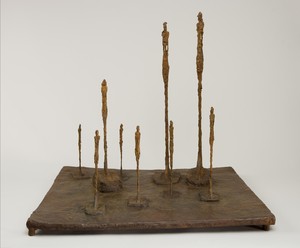
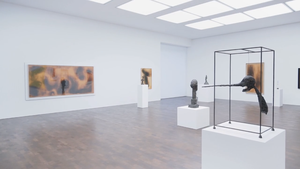
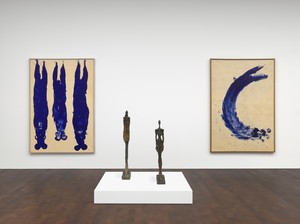
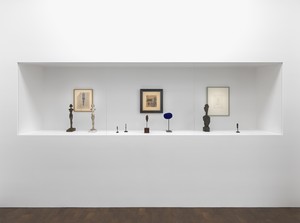
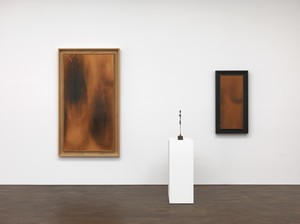

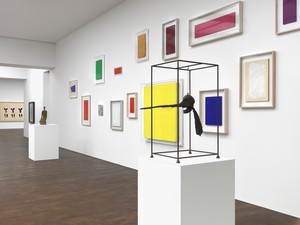
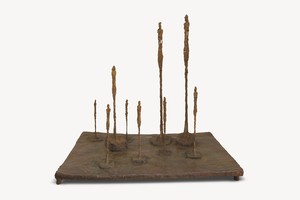
![Alberto Giacometti, [Annette debout], c. 1954. Bronze, 19 × 4 ⅛ × 8 ⅛ inches (48.4 × 10.4 × 20.6 cm) © Alberto Giacometti Estate/Licensed in the UK by ACS and DACS, 2016](https://gagosian.com/media/images/exhibitions/2016/alberto-giacometti-yves-klein-in-search-of-the-absolute/eUvgJk-C2rGW_300x300.jpg)
![Alberto Giacometti, [Annette debout], c. 1954. Painted plaster, 19 × 4 ⅛ × 8 ⅛ inches (48.4 × 10.4 × 20.6 cm) © Alberto Giacometti Estate/Licensed in the UK by ACS and DACS, 2016](https://gagosian.com/media/images/exhibitions/2016/alberto-giacometti-yves-klein-in-search-of-the-absolute/bMduNLpjWBPj_300x300.jpg)
